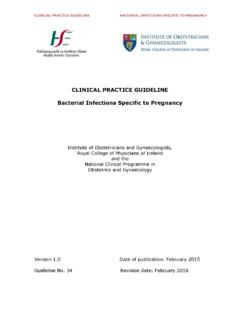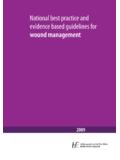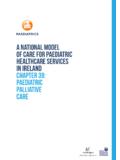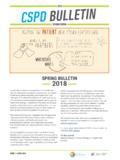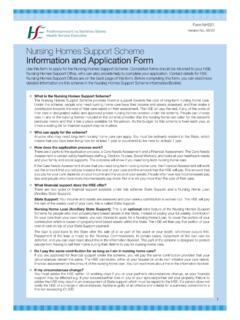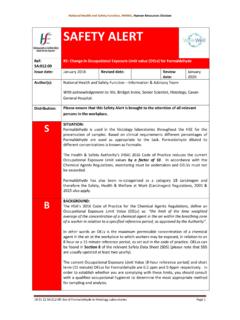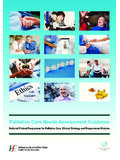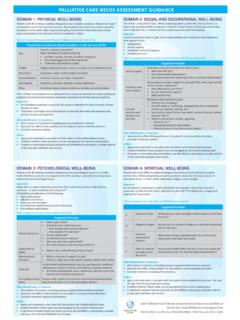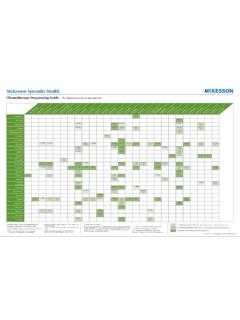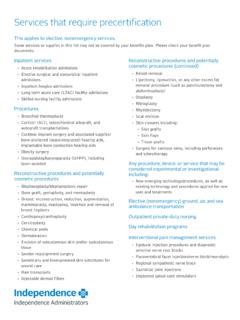Transcription of A National Model of Care for Paediatric Healthcare ...
1 A National Modelof care for PaediatricHealthcare Servicesin IrelandChapter 29:PaediatricInfectious Diseases& ImmunologyClinical Strategy and Programmes DivisionTable of Introduction 2 Paediatric Infectious Diseases 2 Paediatric Immunology 4 Paediatric Infectious Diseases and Immunology Collaborations 5 Paediatric Infectious Diseases and Clinical Microbiology Collaboration 5 Integrated Subspeciality care and Network Service 6 Conditions Managed by Specialist Infectious Diseases services 7 Conditions managed by Specialist Immunology
2 services Current Service Provision 9 Immunology services 12 Affiliated Clinics Proposed Model of care 15 Patient Journey through the Service 15 The Multidisciplinary Team (MDT) 17 Site of PIID care Provision 20 Mechanism of PIID Service Provision Requirements for Successful Implementation of Model of care 23 Staffing 23 Infrastructure 26 Education and Training Programme Metrics and Evaluation Key Recommendations Abbreviations and Acronyms References 331national Clinical Programme for Paediatrics and neonatology.
3 A National Model of care for Paediatric Healthcare services in InTroduCTIonPaediatric Immunology and Infectious Diseases (PIID) are two individual Paediatric sub-specialties with different, although overlapping training requirements. Paediatric Infectious Diseases (pID) and Paediatric Immunology work in a complementary fashion with natural synergies such that a combined Department of Infectious Disease and Immunology serves well to meet the needs of patients. They are closely aligned with Clinical Microbiology however, and while there are areas of shared responsibility, they remain distinct in training and in overall service Paediatric Infectious diseasesInfectious diseases remain a major cause of morbidity and mortality in children.
4 Infections in children differ from adults in aetiology, epidemiology, pathogenesis, management and prevention. Although there have been major strides in the control and prevention of many childhood infectious diseases (polio, tetanus, measles, Haemophilus influenzae type B meningitis, group C meningococcal, invasive pneumococcal disease), the infectious disease challenge remains greater than ever before. The emergence of relatively new infections such as HIV/AIDS, hepatitis C, severe acute respiratory syndrome (SARS), MERS-coV; the re-emergence of old foes with new complexity, multi-drug resistant tuberculosis; multi-drug resistant organisms and increasing numbers of vulnerable patients; critically ill patients in the Paediatric intensive care unit (PICU).
5 And patients that are immunocompromised as a result of disease or its treatment, means that need for expertise in the area of Paediatric infectious diseases has never been specialists diagnose, treat and work to prevent infections in children and adolescents. Additionally, they often function like medical detectives and evaluate young people with symptoms that are recurrent, atypical or unexplained. pID physicians combine clinical care with work as researchers, educators, administrators, hospital epidemiologists and/or work in antimicrobial stewardship.
6 Up to 50% of Paediatric hospital admissions are for infection. The management of many of these fall well within the scope of the general paediatrician. However, even for some common conditions, uncertainty in diagnosis, development of complications, or emergence of resistant organisms means that the input and advice of a pID specialist is sought to benefit the patient as often through the limitation of inappropriate antimicrobial use as the substitution or addition of antimicrobial agents.
7 The majority of the inpatient pID physician workload relates to infections complicating hospital admission for other diagnoses, up to 50% of leukaemia patient undergoing transplant can be expected to develop infection, as can 20% of patients with solid tumours and 3 % of patients post-cardiac surgery. For these patients, once consulted, the pID specialist investigates and manages all aspects pertaining to the infection, generally assessing the patient on a daily basis until the infectious issue is resolved or a clear management plan in place.
8 Thus a significant portion of the pID specialist workload relates to the support of other sub-specialties in the management of children and adolescents with, or suspected to have, complicating infection. The availability of paediatricians trained in infectious diseases, and ready and willing to meet the challenge of caring for patients, even with potentially very contagious infections, is an essential component of a comprehensive Paediatric health care service.
9 Although epidemics such as the 2014-5 ebola epidemic remain extremely rare events, over recent years emerging and re-emerging infectious diseases continue to challenge (see Figure 1) (Morens, 2004). Even since Morens 2004 publication, new infections, and detection of infections in new geographic locations, have been recognised, MERS-CoV in the Middle East, new influenza strains, spread of antimicrobial resistant bacteria, emergence of chickungunya and leishmaniasis in Europe. Although the threat 2national Clinical Programme for Paediatrics and neonatology:a National Model of care for Paediatric Healthcare services in Irelandof these conditions to the health of Irish children may be low, considerable expertise, time, and effort must be invested in developing contingency protocols and procedures.
10 The PIID service is relied upon for their expertise in this area. The locations of some of these disease hot spots are remote however, with reduction in transport times and increasing global migration diseases (up to now confined to a geographic region), can now spread with alarming rapidity (Morens, 2008). pID specialists are well placed to investigate, diagnose and manage patients who may be at risk for such specialists directly manage young people with relatively uncommon but complicated systemic infections and fever syndromes (tuberculosis, HIV/AIDS, hepatitis B, hepatitis C, Kawasaki syndrome, congenital infections).
